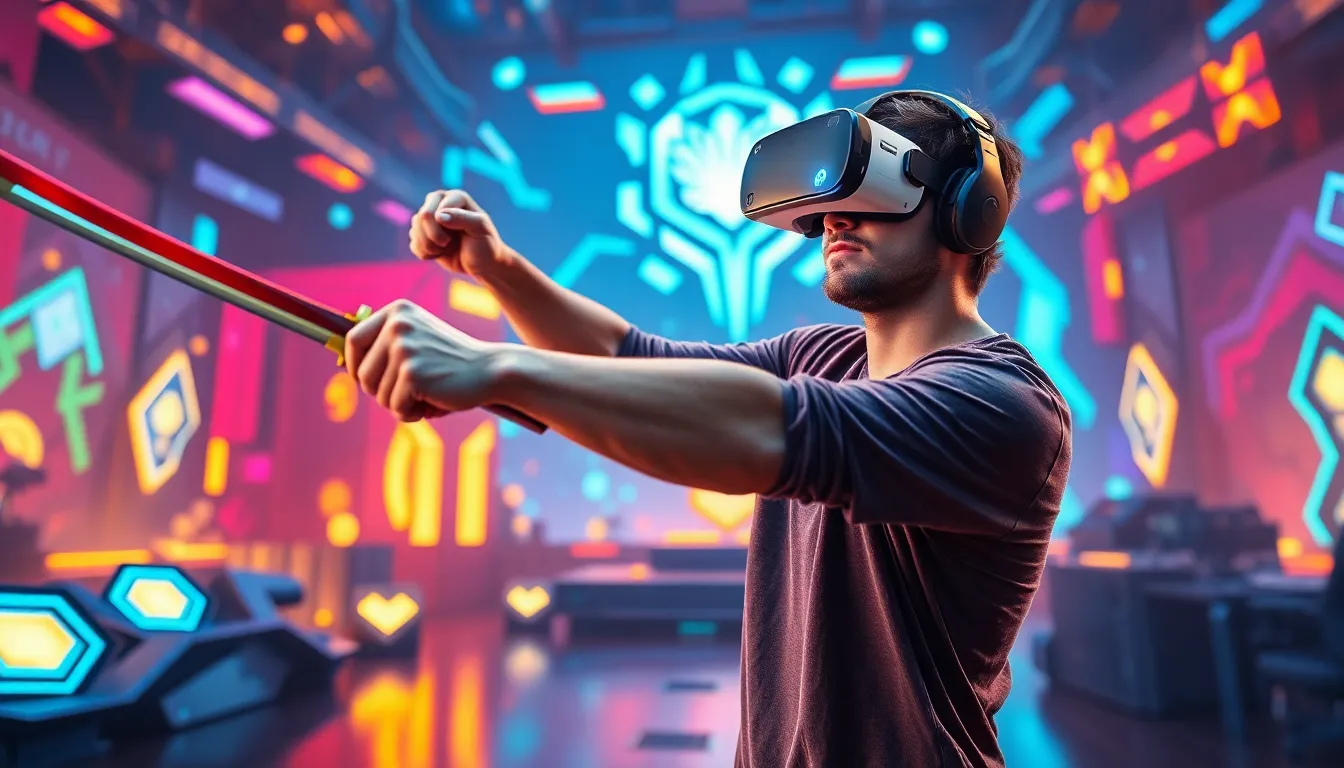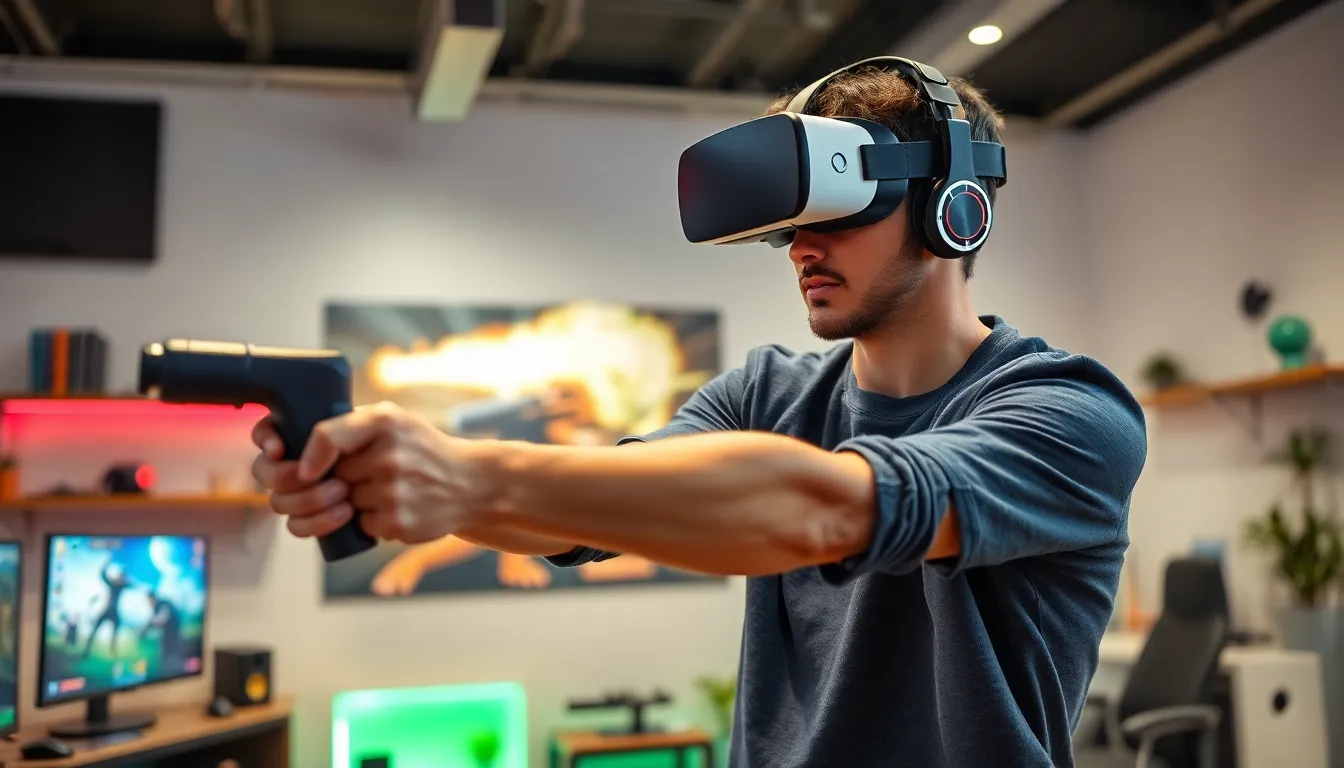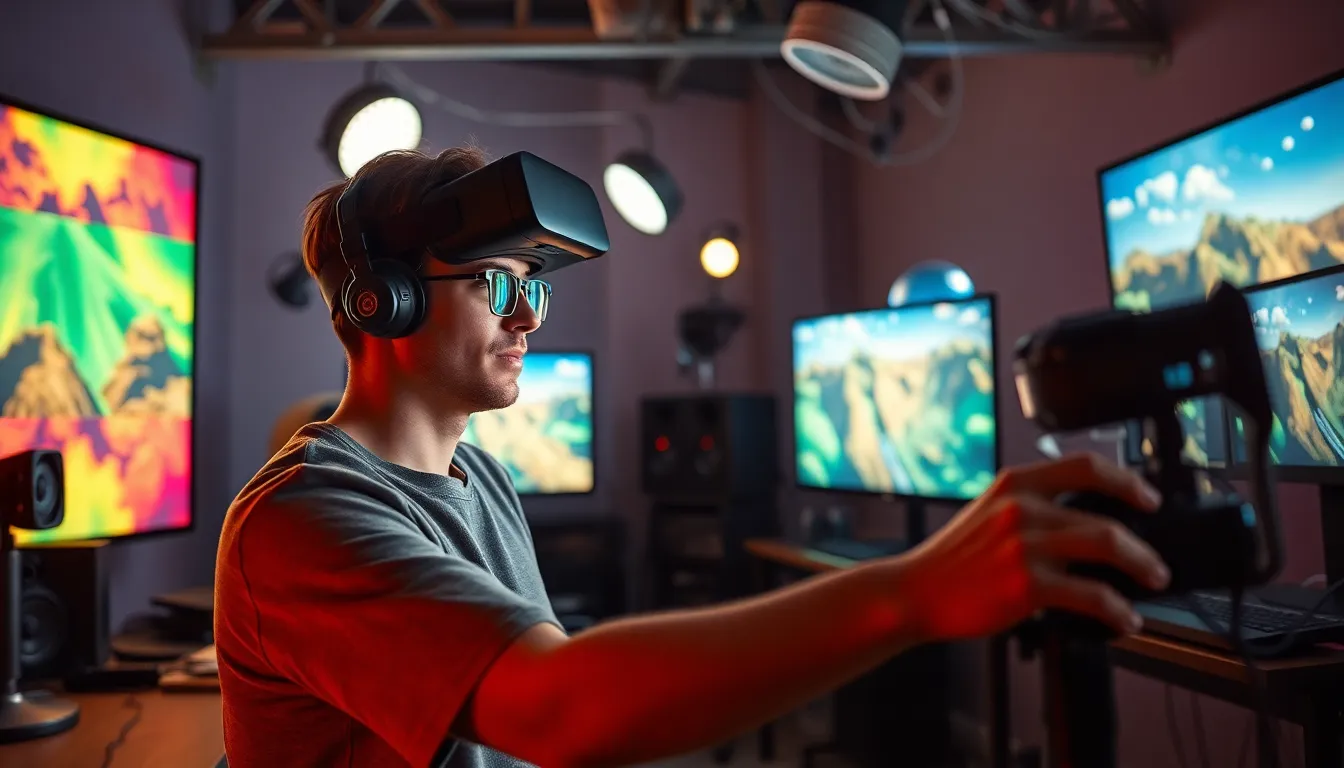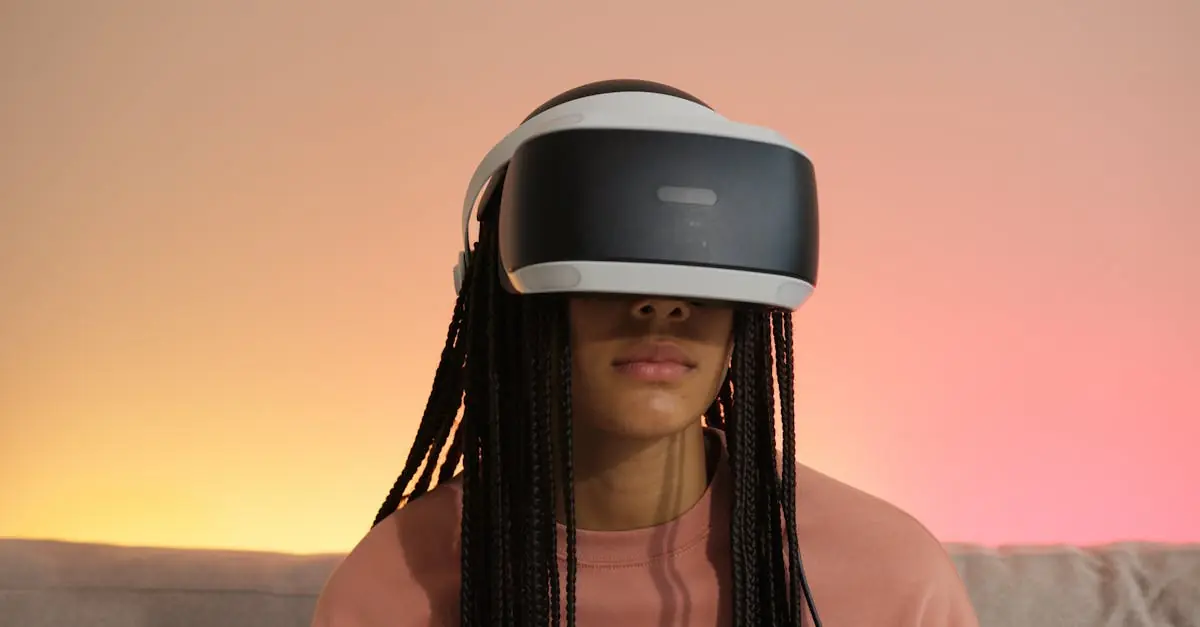Virtual reality has revolutionized the way gamers experience combat, turning ordinary players into fearless warriors in fantastical realms. Imagine dodging virtual bullets while your heart races and your palms sweat—it’s not just a game; it’s an adrenaline-packed adventure that feels all too real. VR combat mechanics take immersion to a whole new level, where every swing of a sword or pull of a trigger makes you feel like the hero of your own action movie.
But let’s be honest, mastering these mechanics can feel like trying to juggle flaming swords while riding a unicycle. From intuitive controls to physics that make your head spin, understanding how VR combat works is crucial for survival—and for bragging rights among friends. Dive into this article to explore the ins and outs of VR combat mechanics, and get ready to level up your gaming experience in ways you never thought possible.
Table of Contents
ToggleOverview of VR Combat Mechanics
VR combat mechanics encompass various gameplay elements that contribute to an immersive experience. These elements include movement, combat styles, and interaction systems, which all enhance player engagement. Movement in VR often uses physical gestures, allowing players to dodge, duck, and maneuver as they would in real life. This physicality adds a layer of realism, making combat scenarios feel urgent and dynamic.
Combat styles range from melee to ranged engagements. Players utilize weapons such as swords, guns, or even unique tools, relying on virtual hand movements to execute attacks. Each weapon type carries distinct mechanics, affecting damage, speed, and reach. For example, melee weapons require players to master timing for effective strikes, while ranged weapons demand precision in aiming.
Interaction systems also play a critical role in VR combat. Players can pick up objects, throw items, or activate environmental elements, impacting the flow of battles. Such interactions deepen immersion and require players to think strategically while engaging in combat. Additionally, feedback systems like haptic feedback simulate the sensation of impact, allowing players to feel every hit and increase the stakes during encounters.
Developers implement AI opponents that adapt to player strategies, creating a challenging environment. This adaptation ensures combat remains unpredictable, pushing players to refine their techniques continuously. Effective use of space and awareness of surroundings becomes essential in VR, as positioning can often determine victory or defeat.
Mastery of these mechanics requires practice and familiarity with the game’s design. Engaging with various combat scenarios improves players’ skills and enhances their overall VR combat experience. By understanding the intricacies of these mechanics, players can fully immerse themselves in the virtual battlefield, elevating their gameplay to new levels.
Key Elements of VR Combat

VR combat relies on several key elements that enhance player engagement and realism. Immersion and control schemes are fundamental aspects that shape the player experience.
Immersion and Presence
Immersion in VR combat creates a sense of being in another reality. Players interact with environments that react to their movements, amplifying the feeling of presence. Depth perception is crucial, allowing players to judge distances accurately. Combat scenarios benefit from audiovisual stimuli, making actions impactful. The physicality of gestures like dodging or swinging creates realism. Spatial awareness is vital, helping players navigate their surroundings effectively.
Control Schemes and Input Devices
Control schemes play a significant role in VR combat mechanics. Motion controllers allow for precise interactions, enabling fluid movements and attacks. Different games implement varied input devices, catering to diverse playstyles. Some use traditional gamepads, while others focus purely on handheld controllers. The choice of control scheme affects the overall combat experience and strategy. A well-designed input system enhances responsiveness, ensuring actions correspond seamlessly to player intent. This adaptability in control schemes contributes to more engaging gameplay in VR environments.
Types of Combat Scenarios
Combat scenarios in VR offer diverse experiences, each with unique mechanics and strategies. Understanding these types elevates the overall gaming experience.
Melee Combat
Melee combat emphasizes close-range engagement, demanding quick reflexes and strategic movement. Physical actions like swinging virtual weapons require precise timing and spatial awareness. Players often utilize dodging techniques to evade enemy strikes while delivering powerful blows. Success relies on mastering combos and reading opponents’ movements. Different weapon types, such as swords and axes, introduce varied attack patterns, allowing players to find their preferred fighting style. This variety enhances immersion, making players feel like they’re battling in a choreographed fight scene.
Ranged Combat
Ranged combat shifts the focus to distance, requiring players to utilize firearms or projectile weapons. Precision shooting plays a crucial role, necessitating accurate aiming and positioning to secure successful hits. Players can engage multiple enemies from afar, but staying aware of surroundings is essential to avoid ambushes. Various weapons, such as bows and guns, offer distinct firing mechanics, influencing gameplay strategy. Mastering trajectory and reload mechanics enhances players’ effectiveness. In many scenarios, stealth tactics complement ranged combat, allowing players to eliminate enemies without drawing attention.
Tactical and Strategy-Based Combat
Tactical and strategy-based combat emphasizes careful planning and decision-making. In these scenarios, players often control squads or units to outsmart opponents. Selecting the right characters or abilities can significantly impact the outcome of a battle. Understanding enemy patterns and optimizing team compositions creates opportunities for surprise attacks and flanking maneuvers. Environmental elements can also be used strategically, offering cover or vantage points. Communication among team members enhances coordination, resulting in more effective engagement. Such mechanics foster a deep sense of involvement, requiring players to think critically and adapt their strategies mid-battle.
Challenges in VR Combat Mechanics
Adapting to virtual reality combat presents various challenges for players. They often experience motion sickness and fatigue, which can hinder gameplay and immersion.
Motion Sickness and Fatigue
Motion sickness arises when visual input conflicts with physical sensations. Players may feel disoriented or nauseous due to this disconnect. Factors such as rapid movement or lack of frame rate stability exacerbate these symptoms. Fatigue also affects engagement. Extended periods of physical activity lead to tiredness, impacting performance. Developers must design environments and mechanics that minimize these effects to enhance player comfort.
Interaction Limitations
Interaction limitations can restrict player engagement in VR combat. Not all environments in games support dynamic interaction. Players may find it difficult to grasp and manipulate objects realistically. Limitations in tracking technology affect precision, making actions feel less fluid. Additionally, control schemes may not accommodate different play styles effectively, restricting engagement. Ensuring intuitive and responsive interactions is vital for creating satisfying VR experiences.
Future of VR Combat Mechanics
Emerging technologies are set to revolutionize VR combat mechanics in the coming years. Innovations in hardware, like more advanced motion tracking systems, increase player immersion and accuracy. Integration of artificial intelligence will enhance non-player character behaviors, allowing them to adapt dynamically to player actions and strategies.
Next-gen graphics will elevate realism, creating environments that respond to player movements. Enhanced haptic feedback systems are expected to provide more tactile sensations during combat. With improved sensory experiences, players will feel the impact of every strike and the weight of their virtual weapons.
Cross-platform compatibility is likely to expand the VR combat audience. Gamers will engage with diverse communities, fostering collaboration and competition across various devices. Cloud gaming might enable smooth experiences, regardless of hardware limitations, making high-quality VR accessible to a broader range of users.
Customization options will also increase, allowing players to tailor their combat experiences. Personalized avatars and weapon loadouts will reflect individual play styles. Such features will empower users to optimize their strategies in melee and ranged scenarios.
Companies are focusing on wellness, designing experiences that address motion sickness and fatigue. Development of adaptive comfort settings will cater to individual sensitivities, encouraging longer and more enjoyable gameplay sessions. This focus on player health can lead to sustained interest in VR combat games.
The future of VR combat mechanics promises to deliver deeper immersion, advanced interactivity, and greater inclusivity. As technology evolves, players can anticipate more engaging and enjoyable combat experiences.
The evolution of VR combat mechanics is reshaping the gaming landscape. As developers continue to innovate with advanced technologies and immersive experiences, players can expect more engaging and realistic combat scenarios. The emphasis on adaptability and player comfort will only enhance enjoyment and accessibility.
With the integration of AI and improved interaction systems, the future holds exciting possibilities for strategic gameplay. Players are likely to experience deeper immersion and a stronger connection to their virtual environments. This ongoing development will ensure that VR combat remains a thrilling and dynamic aspect of gaming for years to come.



